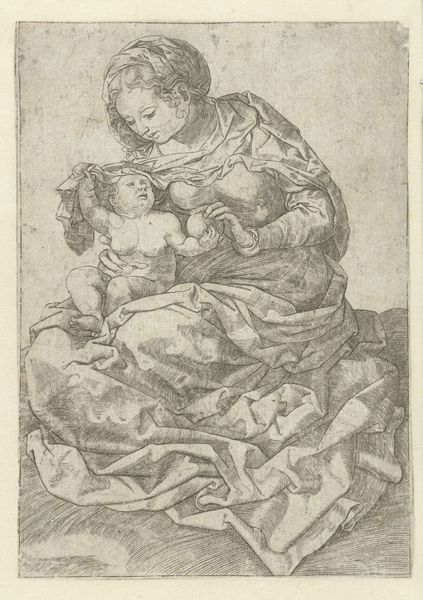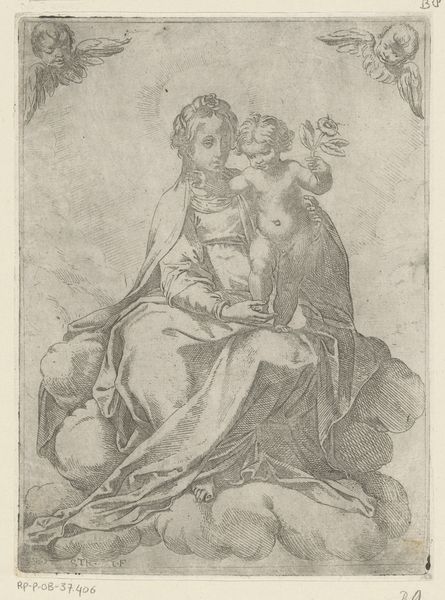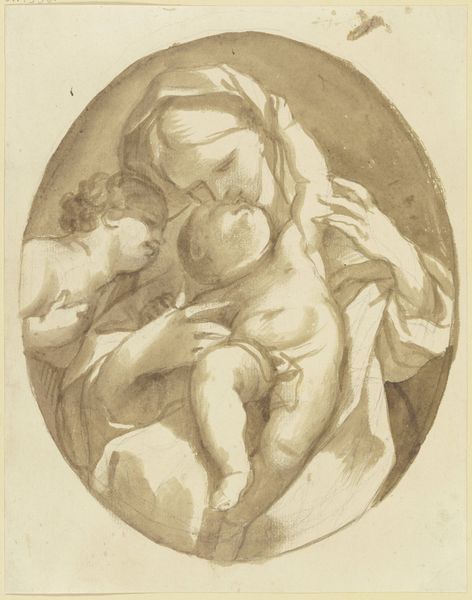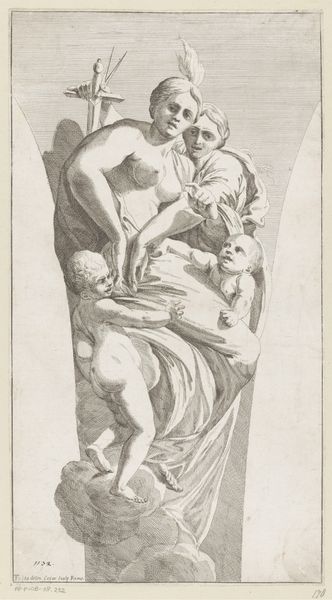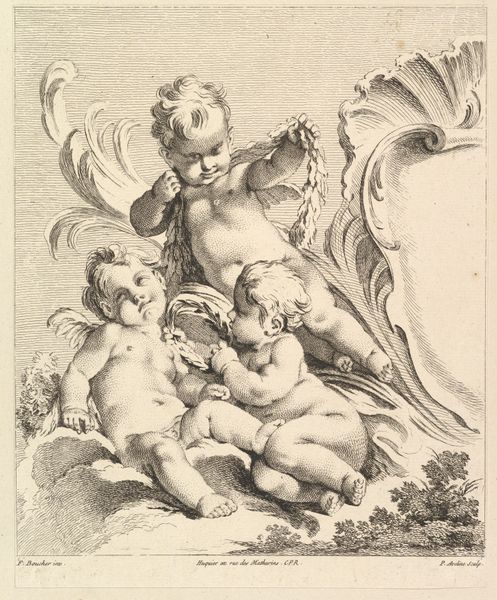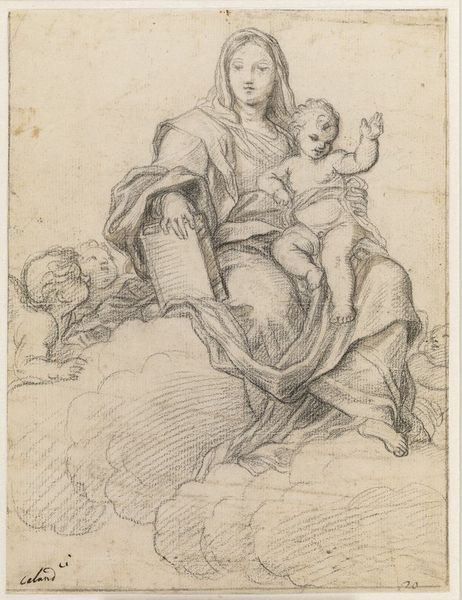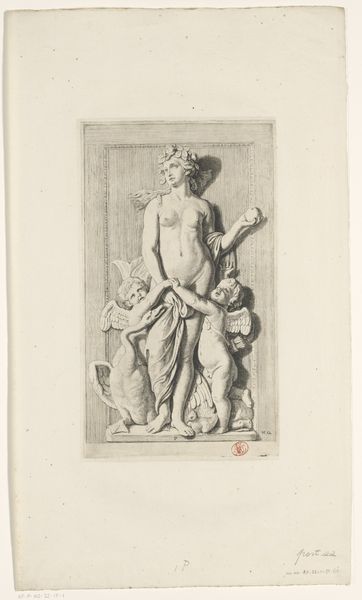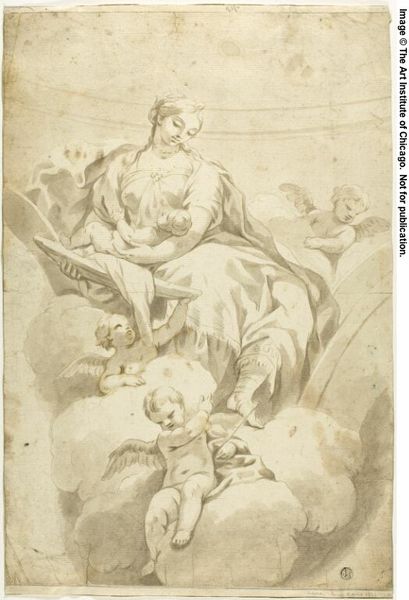
engraving
#
bird
#
figuration
#
history-painting
#
italian-renaissance
#
engraving
Dimensions: height 135 mm, width 100 mm
Copyright: Rijks Museum: Open Domain
Curator: Welcome. Here we have Vespasiano Strada's "Maria met Kind en vogel," dating from approximately 1592 to 1622, an engraving housed here at the Rijksmuseum. Editor: It’s quite striking how the artist captures such tenderness in a simple monochrome. The way the light falls gives a luminous quality to the scene. Curator: Yes, Strada skillfully utilizes the engraving technique to create a soft, almost hazy effect. Considering the religious and social climate of the time, images of the Madonna and Child served as important visual symbols of piety. They reinforced the Catholic Church's teachings and the role of motherhood. Editor: Precisely, and the composition, though simple, has remarkable depth. Note the strategic placement of the Virgin Mary, occupying a large amount of space, almost possessively drawing our eye to this strong central figure with the divine child and the inclusion of the bird introduces an element of the natural world. The slightly downcast gaze of Mary contributes to the serene and solemn tone. Curator: Right. Such engravings were also often circulated as devotional prints, accessible to a wider audience than large-scale paintings. The presence of the bird, a symbol often associated with the soul or the Holy Spirit, would’ve deepened the spiritual message for contemporary viewers. This artwork serves as an example of religious art functioning within social frameworks and personal devotion during the Renaissance. Editor: And thinking just of artistic interpretation, observe the remarkable expressiveness achieved with simple lines, each contributing to the dynamic yet balanced interplay of light and shadow; truly this piece uses strong diagonals to reinforce movement of both fabric and figure. This, too, adds layers of meaning to an otherwise fairly ubiquitous period trope. Curator: Thinking about this piece in terms of history, this era in art produced powerful emotional artifacts. It certainly encourages consideration about public art and visual culture during the period, but even its more nuanced components encourage historical understanding through beauty and imagery. Editor: A successful synthesis of form and devotion—one can almost feel the sacredness radiating from this quiet domestic scene. A good example of visual piety with careful choices made regarding line, shade, and perspective.
Comments
No comments
Be the first to comment and join the conversation on the ultimate creative platform.
